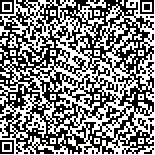| 任 静,乔丽颖,席云峰.2017年内蒙古肿瘤登记地区肺癌发病与死亡现状及2011—2017年趋势分析[J].中国肿瘤,2022,31(4):249-259. |
| 2017年内蒙古肿瘤登记地区肺癌发病与死亡现状及2011—2017年趋势分析 |
| Incidence and Mortality of Lung Cancer in Inner Mongolia in 2017 and the Trends from 2011 to 2017 |
| 投稿时间:2022-01-14 |
| DOI:10.11735/j.issn.1004-0242.2022.04.A002 |
|
 |
| 中文关键词: 肺癌 发病率 死亡率 趋势 内蒙古自治区 |
| 英文关键词:lung cancer incidence mortality trend Inner Mongolia |
| 基金项目: |
|
| 摘要点击次数: 1128 |
| 全文下载次数: 469 |
| 中文摘要: |
| 摘 要:[目的] 描述和分析2017年内蒙古肿瘤登记地区肺癌的发病、死亡特征,以及2011—2017年肺癌的流行趋势。[方法] 对2017年内蒙古20个肿瘤登记点的数据进行整理,用Joinpoint统计软件分析2011—2017年内蒙古赤峰市敖汉旗、通辽市开鲁县、牙克石市、巴彦淖尔市临河区4个肿瘤登记地区肺癌的发病与死亡趋势,并计算肺癌中标发病(死亡)率的平均年度变化百分比(AAPC)。根据2000年全国人口普查年龄标准构成和Segi’s世界标准人口年龄构成计算人口年龄标准化率(中标率和世标率)。[结果] 2017年内蒙古肿瘤登记地区肺癌发病粗率为56.77/10万,中标率和世标率分别为38.37/10万和43.76/10万,0~74岁累积发病率为4.54%,占全部恶性肿瘤发病的20.83%,居全部恶性肿瘤发病首位;肺癌死亡粗率42.11/10万,中标率和世标率分别为28.48/10万、33.16/10万,0~74岁累积死亡率为3.19%,占全部恶性肿瘤死亡的27.49%,居全部恶性肿瘤死亡首位。其中肺癌发病率和死亡率城市均高于农村,男性均高于女性。2011—2017年内蒙古4个肿瘤登记地区肺癌发病中标率AAPC为-1.8%,死亡中标率AAPC为0.9%,但均无统计学意义(P>0.05)。农村地区肺癌死亡率呈下降趋势,女性死亡中标率从2011年的21.44/10万下降至2017年的16.44/10万,AAPC为-5.1%(P<0.05)。从年龄别趋势来看,2011—2017年30~44岁年龄组肺癌发病中标率以每年5.5%的趋势在下降(P<0.05),且差异有统计学意义。[结论] 2011—2017年内蒙古肿瘤登记地区肺癌的发病率和死亡率均处于较高水平,呈现城市高于农村、男性高于女性的特征,肺癌的发病率和死亡率随年龄增长而上升,应加强男性、中老年人群的肺癌防控,从而有效降低肺癌的发病和死亡。 |
| 英文摘要: |
| Abstract:[Purpose] To analyze the incidence and mortality of lung cancer in Inner Mongolia cancer registry areas in 2017 and the trends of lung cancer from 2011 to 2017. [Methods] The cancer incidence and mortality data in 2017 were collected from 20 cancer registries of Inner Mongolia. Joinpoint software was used to analyze the trends of the incidence and mortality of lung cancer from 2011 to 2017 in four cancer registries of Inner Mongolia(Aohan Banner of Chifeng City, Kailu County of Tongliao City, Yakeshi City and Linhe District of Bayannur City). The average annual percentage change(AAPC) of age-standardized incidence/mortality rates of lung cancer was calculated. The age-standardized rate was calculated with the Chinese population in 2000 and the world Segi’s standard population. [Results] In 2017, the crude incidence rate of lung cancer in Inner Mongolia cancer registry areas was 56.77/105, and the age-standardized incidence rates by Chinese standard population and by world standard population(ASIRC/ASIRW) were 38.37/105 and 43.76/105, respectively. The cumulative incidence rate(0~74 years) was 4.54% , accounting for 20.83% of the total incidence of malignant tumors, ranking the first. The crude mortality rate of lung cancer was 42.11/105, the age-standardized mortality rates by Chinese standard population and by world standard population (ASMRC/ASMRW) of lung cancer were 28.48/105 and 33.16/105,respectively. The cumulative mortality rate(0~74 years) was 3.19% , accounting for 27.49% of the total mortality of malignant tumors, ranking the first. The incidence and mortality rates in urban areas were higher than those in rural areas; and were higher in male than those in female. From 2011 to 2017, the AAPC of ASIRC and ASMRC of lung cancer in four cancer registries in Inner Mongolia were -1.8% and 0.9%, respectively(P>0.05). The mortality rate of lung cancer in rural areas showed a decreasing trend, the ASMRC for women decreasing from 21.44/105 in 2011 to 16.44/105 in 2017, and the AAPC was -5.1%(P<0.05). The ASIRC of lung cancer at the age group of 30~44 years from 2011 to 2017 was significantly decreased with a AAPC of -5.5%(P<0.05). [Conclusion] From 2011 to 2017, the incidence and mortality rates of lung cancer in Inner Mongolia cancer registry areas remained high. The rates were higher in urban areas than those in rural areas and higher in male than those in female. The incidence and mortality rates of lung cancer increased with age. The prevention and control of lung cancer should be strengthened for males, middle-aged and elderly groups to reduce the incidence and mortality of lung cancer effectively. |
|
在线阅读
查看全文 查看/发表评论 下载PDF阅读器 |